5 Fat-Burning Snacks Experts Say to Eat on Repeat After 60
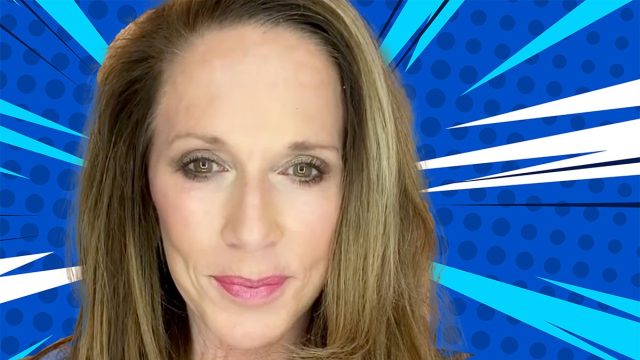
Are you trying to lose weight after 60 but unsure what to eat? Fueling your body with protein and healthy fat filled snacks is what one expert recommends. Karen Trasatti is a fat loss coach for women over 40 who looks half her age at 61. "5 Go-To Snacks That Keep Me Fit and Lean at 61," she captioned the video. "Finding snacks that fuel my body, satisfy cravings, and support my fitness goals is key to staying fit and lean at 61. Here are five of my favorite snacks that I eat on repeat," she says.
Hard-Boiled Eggs + Veggies
Her first snack? Hard-boiled eggs with veggies. "A classic combo! Hard-boiled eggs are a perfect protein source, and I pair them with crunchy veggies like carrot sticks, celery, or cucumber for fiber and volume," she writes.
Nut Butter + Apple Slices
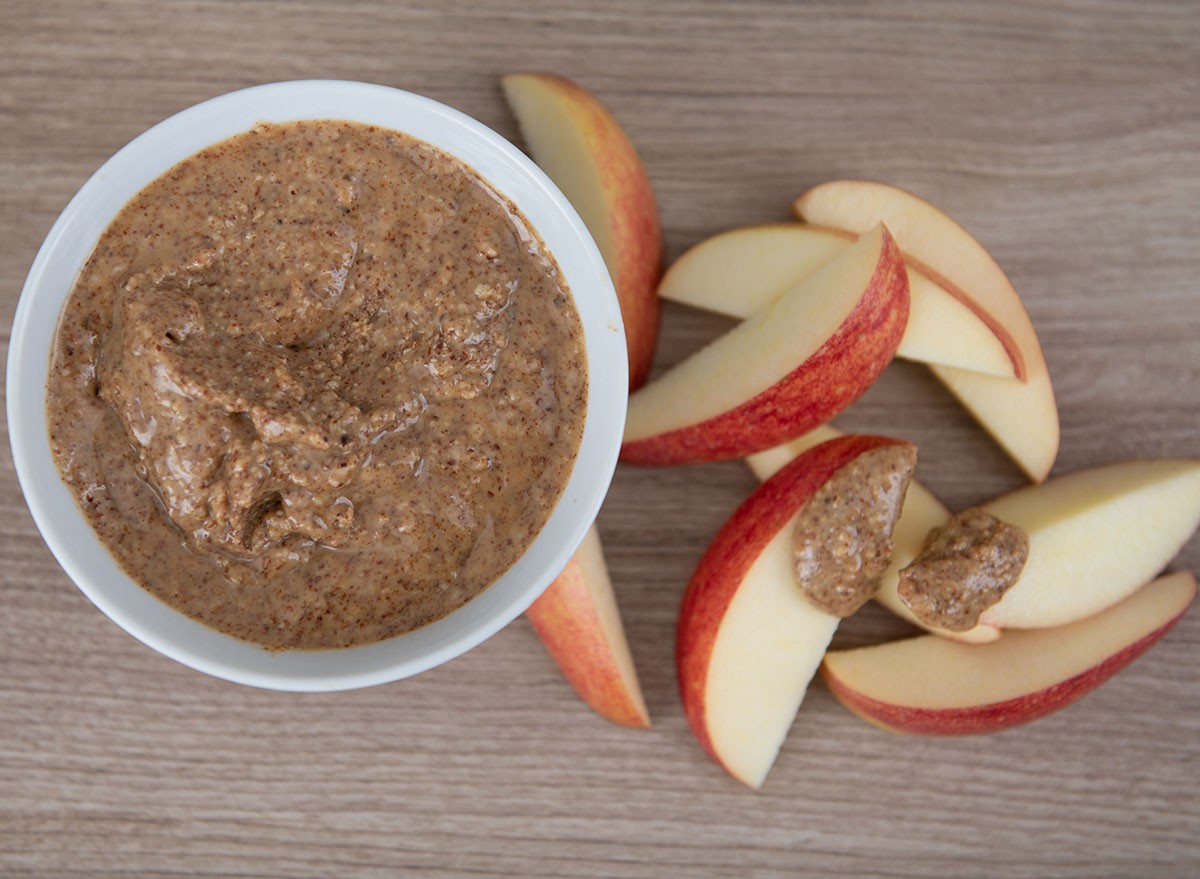
Snack two is apple slices with nut butter. "For a sweet, satisfying snack, I slice up an apple and pair it with almond or cashew butter. It's loaded with fiber, healthy fats, and just the right amount of natural sugar for an energy boost," she writes.
Roasted Chickpeas
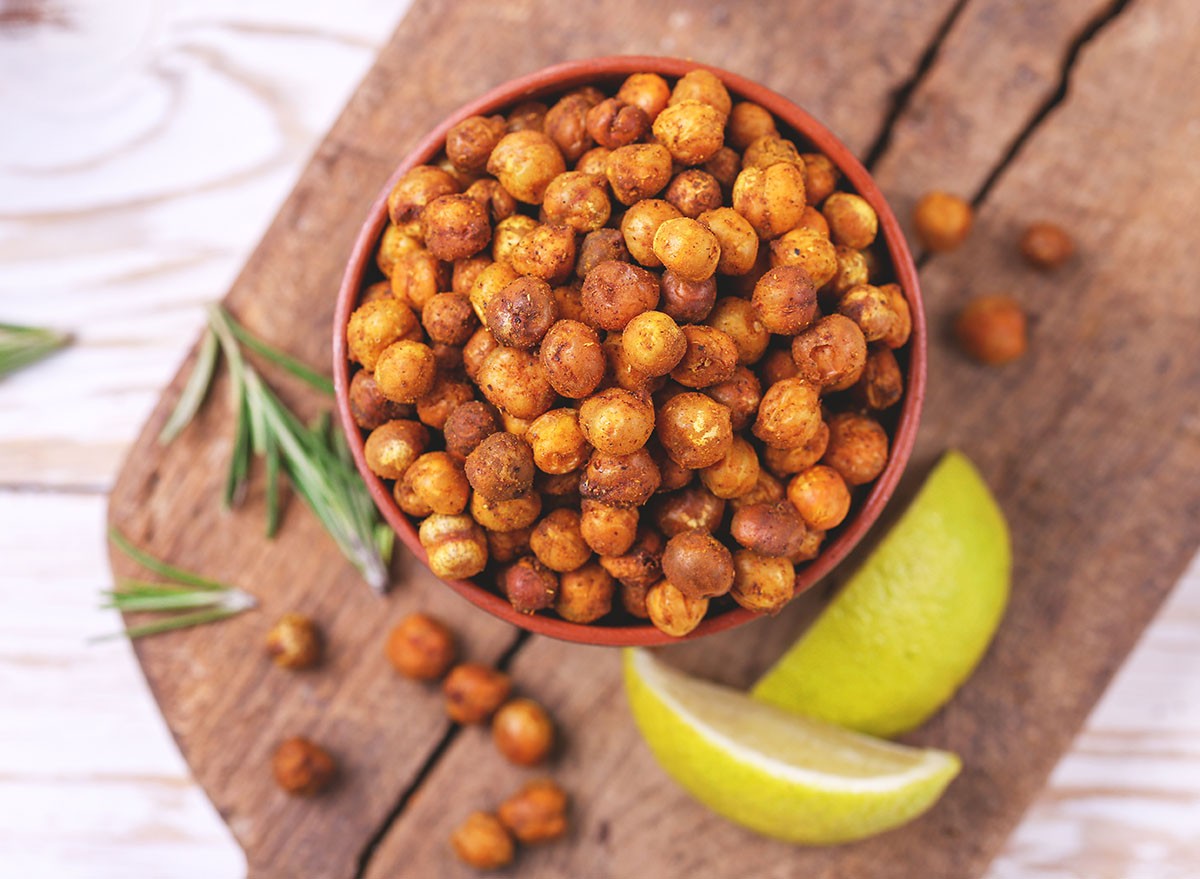
She also loves roasted chickpeas. "Crunchy and full of plant-based protein, roasted chickpeas are my go-to when I want something savory. I season them with paprika, garlic, or chili powder before roasting," she says.
Avocado + Rice Cakes
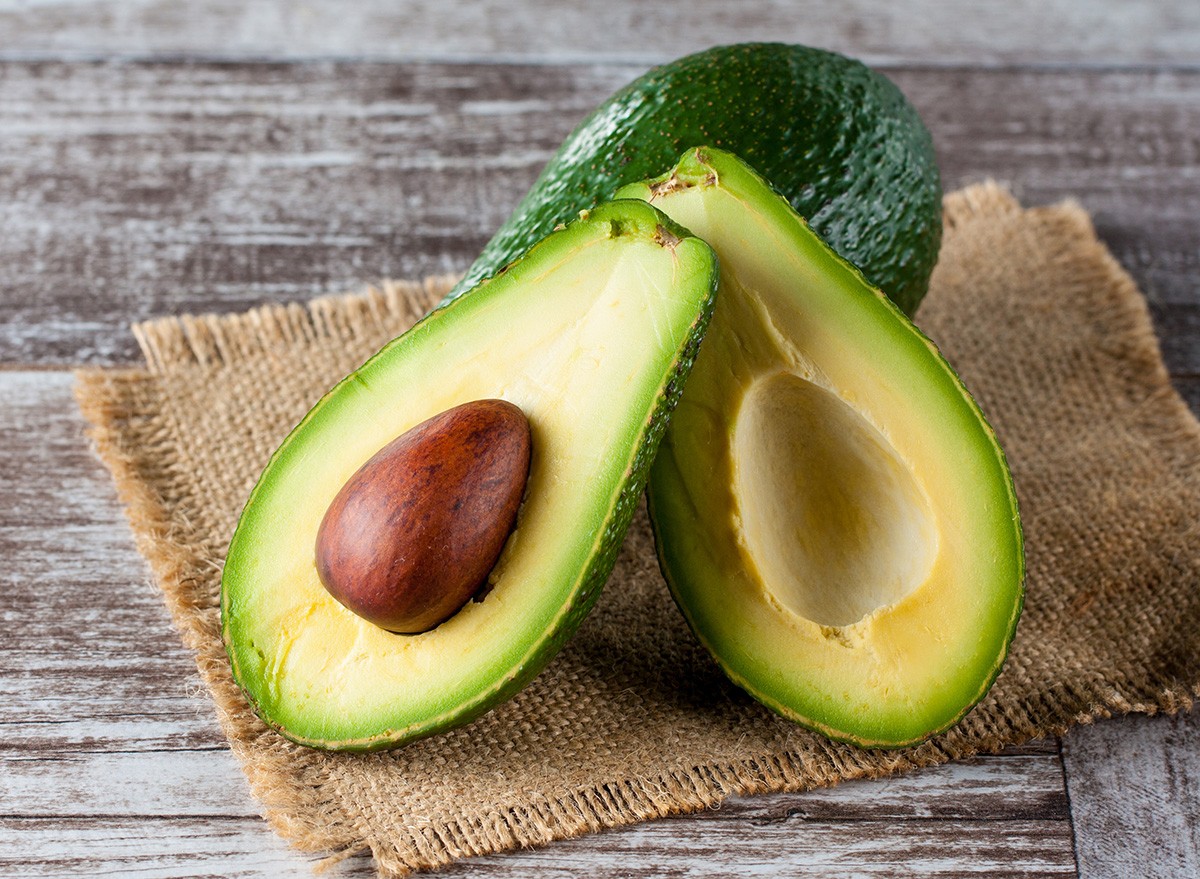
Another unique combo? Avocado and rice cakes. "A gluten-free rice cake topped with creamy avocado, a sprinkle of sea salt, and maybe a dash of chili flakes hits the spot every time. It's satisfying and packed with healthy fats to keep me full," she says.
Homemade Protein Bars
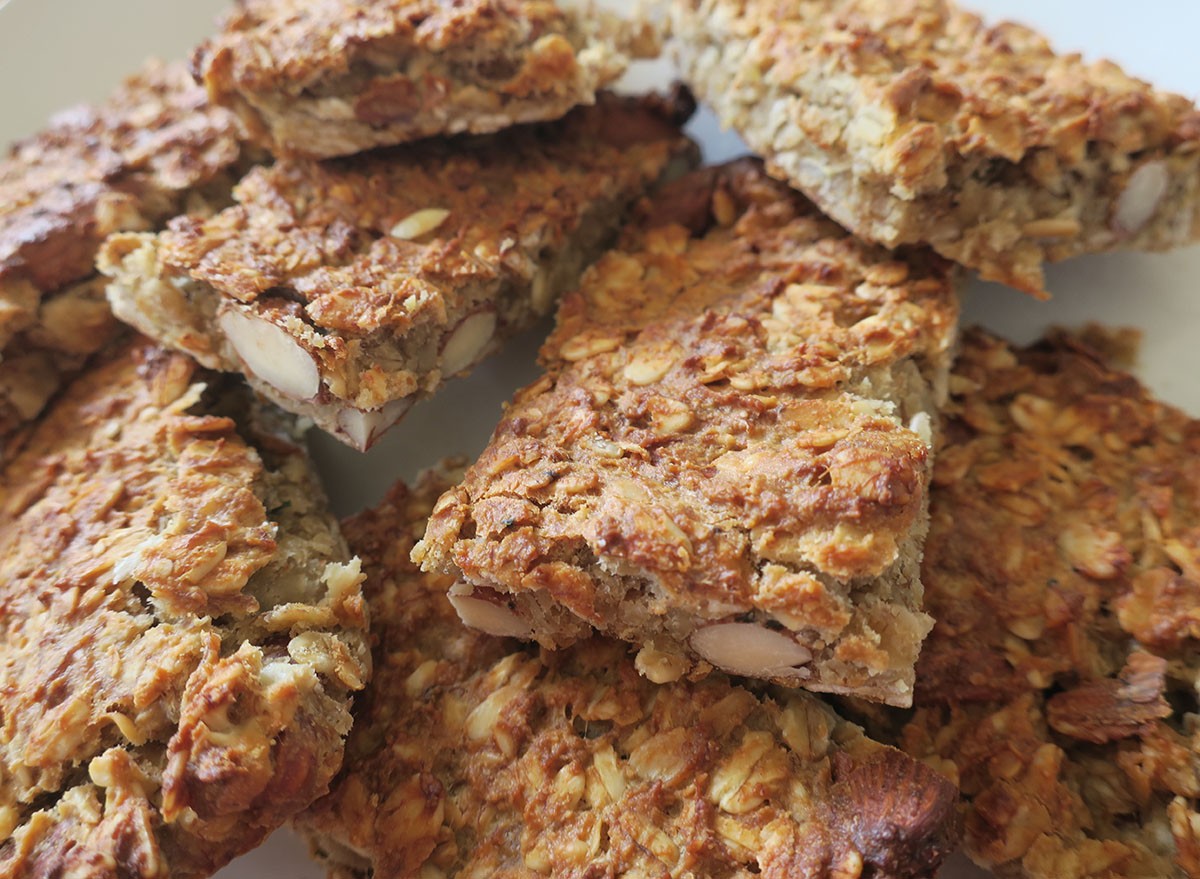
She also loves homemade protein bars. "I make my own protein bars with a mix of gluten-free oats, almond butter, protein powder, and a little maple syrup. They're perfect for a grab-and-go snack," she writes.
Bottom Line
The bottom line as to why these foods work? "These snacks are simple, nutrient-dense, and keep me energized for my workouts, work, and everything in between," she writes. And if you enjoyed this article, don't miss I Hit 60 and These 15 Anti-Aging Foods Keep Me Fit and Feeling 20 Years Younger.




